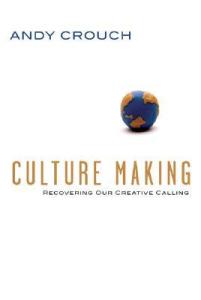We are now halfway through National Reading Awareness Month. What have you been doing to celebrate reading? If you’ve been struggling with coming up with ways to celebrate other than reading more, have no fear. Today I am going to offer a list of suggestions of fun things you can do to celebrate.
1. Post a List of Your Favorite Books to Social Media
By posting some of your favorite books to your Facebook, Twitter, Tumblr, Instagram, or other social media venue of choice, you can share the joy of reading with your friends and followers. Often times someone decided to read a book because one of their friends recommended it to them. You can even post multiple lists throughout the month of different categories of favorite books, such as favorite romances, mystery novels, short story collections, science fiction, historical fiction, etc. The possibilities for book lists are endless. It’s also a good idea to add a 1-3 sentence blurb for each book stating why you chose this particular book, what you enjoyed about it, or what it means to you. You can even challenge your friends to post their own favorite book list.
2. Tell Others about the Books You are Currently Reading
One of the best parts of reading a work of literature is sharing it with others. Post on social media what you are reading and how it’s influencing you right now. Meet with a friend for coffee and strike up a conversation about your book and inquire about his or her current reading life. Create a Goodreads account to allow other readers to see what you’re reading and follow friends to see what they’re reading.
3. Start a Book Club
Decide with a group of friends which book you would like to read together or alternate who gets to decide the current book to read. The great thing about a book club is that it can be as flexible as you want it to be. Have a busy schedule? Meet once a month. Want to become more connected with your fellow book club friends? Meet weekly or bi-weekly. A book club presents an atmosphere for fellowship and fun. You can meet at a person’s home and have a shared meal, go to a nearby park and soak up some vitamin D, or meet at a cozy coffee shop, all while discussing your book. Life was meant to be lived in community, and having a book club is a great way to foster community while challenging others to grow mentally.
4. Publish a Book Review
In a sea of countless books available for consumption, book reviews are a vital tool in helping readers to select books they want to read. Goodreads allows readers to post reviews or comments on books they have read. You can also post reviews on your Facebook page or a blog. If you are feeling particularly adventurous you can even submit your book review for publication in a magazine or newspaper. Some websites, such as Poets & Writers, have lists of places that accept book reviews.
5. Check Out Your Library for Ways to get Involved in the Community
Most libraries have a reading program for the children in their community, especially during the summer when school lets out. Libraries may even be hosting special events in celebration of National Reading Awareness Month. Even though the opportunities to volunteer with children may be slim this time of year, inquire about other ways to get involved. Libraries can be short staffed and lack funds, which increases their dependence on volunteers. See if your library needs help reshelving books, sorting through inventory, or participating in a community event. If there are absolutely no opportunities for you to get involved with your local library, make an effort to get to know your librarians. Make their day by giving them a small gift or a card letting them know how much you appreciate what they do for the community.
6. Donate Gently Used Books to Your Local Community or School Library
Some libraries rely heavily on donations to stock their shelves with books. Sort through your old books to see if there are any you no longer desire to keep. Maybe you have old children’s books that your teenagers have no use for. Donating to your local library is a great way to give back to the community and support literacy.
7. Send Your Favorite Author a Note of Encouragement
Fan-mail is still a great way to share what you loved about an author’s work with him or her. Many authors have websites or blogs that can provide readers a way to get in contact with them. You could send a hand-written letter, card, e-mail, or comment. Some authors even answer questions about their work. Authors who are just starting to get their work published or who are not as well known will particularly appreciate you taking the time to send a note about their work.
These are just a few of the many things you can do to celebrate reading this month; however, I encourage you to make the celebration of reading a life-long habit. Comment below on what you are doing to promote and celebrate reading in your life and community.
